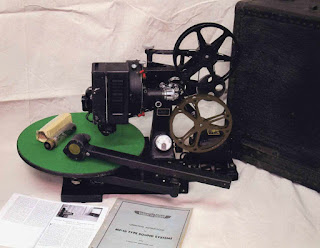After reading a couple scenes and screening Wizard of Oz, please participate in the jigsaw activity as instructed today.
Citizen Kane (intro)
Topping the best films of all time is the important and influential 1941 film by Orson Welles: Citizen Kane (1941). As we view Citizen Kane, there are a series of important elements that can enrich our understanding of this film.
Orson Welles as Auteur:
Welles directed, wrote (partial), and starred in this film (even though it was thought he wasn't old enough to portray Kane). While Welles had direct control over the film and its look, there were other people who contributed artistically. Some of the invention and creativity of film making includes:
Camera Work:
- The Deep Focus shot!
- Low angle shots revealing ceilings!
- Moving shots used as wipes!
- Overlapping dialogue! (not original to Welles, but a trend in Screwball Comedies)
- Long uninterrupted shots!
- Expressionist lighting and photography!
- Multiple perspective!
- Flashbacks!
- Aging!
- The American Dream: For all of Kane's "success", he is not happy. He dies lonely, with only his "possessions" around him. Is all our striving to succeed in America an illusion?
The differing perspectives on Kane's life, especially in the absence of Kane's own point of view, force us to question what was truly important in Kane's life (and by extension what constitutes a life in general.) Judging by Kane's last muttered word: Rosebud, the most important pieces of his life were not the things that made him newsworthy, such as his newspaper successes and political ambitions, nor his friendships and associations. As Thompson interviews different people about Kane, we are given different perspectives on the man (some are unreliable). Odd, though, that we do not see Kane from Kane's POV.
Motifs:
- Isolation
- Materialism/Capitalism
- Old Age
Symbols:
- The Snowglobe
- Sleds
- Statues
Director: Orson Welles
Writers: Herman J. Mankiewicz and Orson Welles (screenplay)
Cinematography by Gregg Toland
Orson Welles ... Charles Foster Kane
Joseph Cotten ... Jedediah Leland
Dorothy Comingore ... Susan Alexander Kane
Agnes Moorehead ... Mary Kane
Ruth Warrick ... Emily Monroe Norton Kane
Ray Collins ... James W. Gettys
Erskine Sanford ... Herbert Carter
Everett Sloane ... Mr. Bernstein
William Alland ... Jerry Thompson
Paul Stewart ... Raymond
George Coulouris ... Walter Parks Thatcher
Fortunio Bonanova ... Signor Matiste
Gus Schilling ... The Headwaiter
Philip Van Zandt ... Mr. Rawlston
Georgia Backus ... Bertha Anderson
Harry Shannon ... Kane's Father
Produced by Orson Welles and George Schaefer .... executive producer
Original Music by Bernard Herrmann
Film Editing by Robert Wise
Casting by Rufus Le Maire & Robert Palmer
Art Direction by Van Nest Polglase
Set Decoration by Darrell Silvera
Costume Design by Edward Stevenson
Makeup by Maurice Seiderman
Let's read a little bit of the script together to get you started. Then, we'll screen the scene.
HOMEWORK: Please read the script Citizen Kane and examine the narratology and script writing techniques used in the written script. More information about Citizen Kane will be covered in class. But get reading!




